O Jerusalem, Shining city on a hill
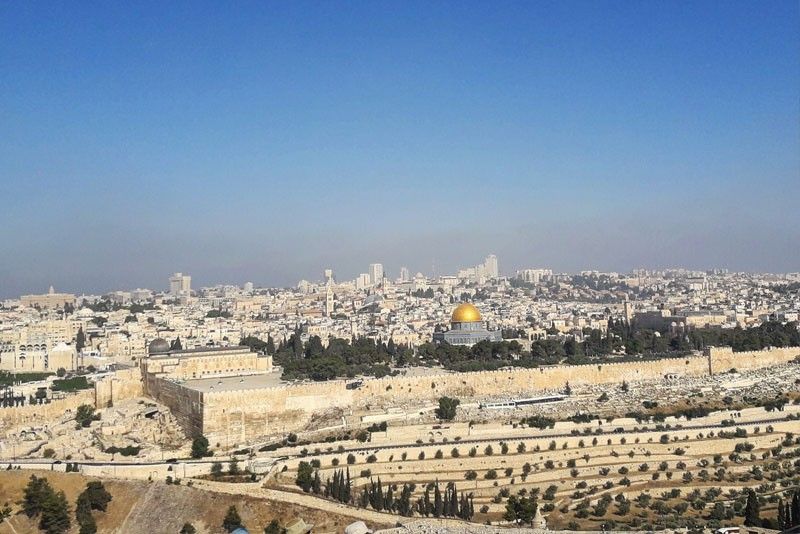
Israel is one place that must be visited at least once in your lifetime, whatever your religious or political persuasion. History, culture, tradition and now technology, scientific discovery and innovation…you’ll find them all in Israel.
With over 80 percent of the country’s population of 106 million being Christians, the Philippines is a very fertile market for tourism to Israel, mainly for pilgrimages. Every Filipino that I have spoken to who has not been to Israel say it is on top of their bucket list, and those who have been encourage those who haven’t to do so.
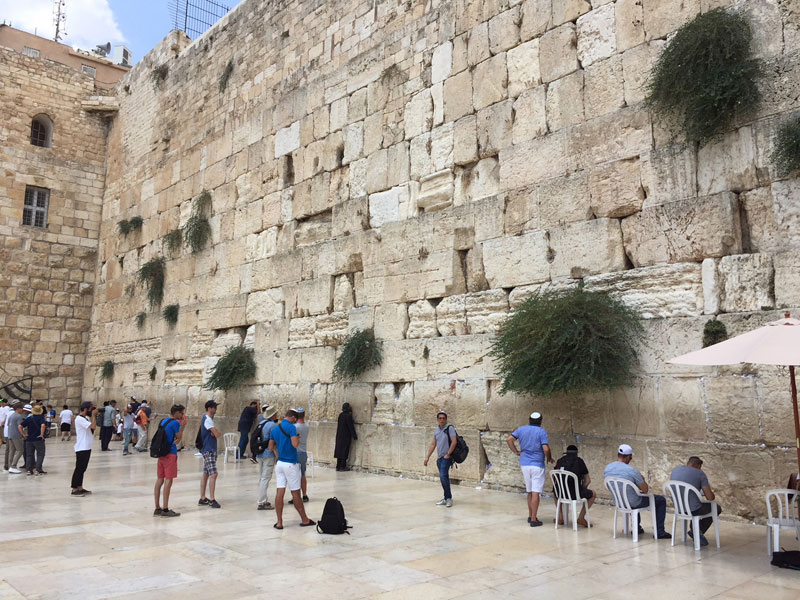
The men’s section of the Western Wall.
However, the first question usually is, “Is it safe?” what with constant media reports of clashes between Israeli and Palestinian forces. That concern has apparently kept the total number of tourists to Israel below 4 million a year, which is surprising, and quite a pity, as Israel is a most fascinating and exciting country.
The growing number of visitors from the Philippines is testament that it is indeed safe to visit Israel, and a look at the map will bolster this assurance – the conflict zone (primarily Gaza) is a distance from areas where tourists go (for example, Gaza is almost a hundred kilometers southwest of Jerusalem). Thus the number of Filipino tourists has been increasing over the last couple of years – a growth of over 60 percent in 2017 to 23,500, from just 14,600 the year before. Last month alone, 1,300 Filipino tourists visited Israel. This increase, and the huge potential of the Philippine market, prompted the setting up last year of an office of the Israeli Ministry of Tourism (IMOT) in Manila.
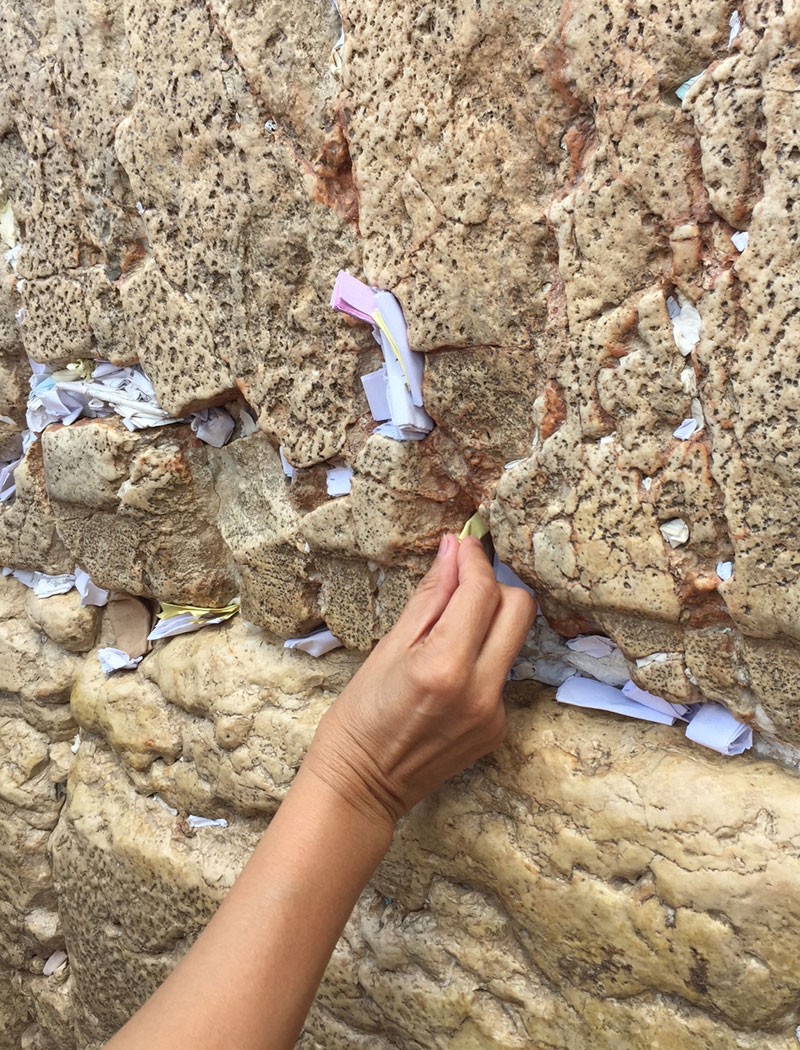
Each year more than a million notes and prayers are placed in the wall’s crevices.
Among the travel industry in Israel, there is also great interest in the Philippine market. Over 50 tour operators and agents from all over Israeli signed up for the business matching session with our group of five travel agents from Manila, Cebu and Davao. Many of them, together with other tour operators, are joining IMOT-organized groups in the coming months to meet with agents in the three cities, as pilgrimage tours pick up going into the fourth quarter, when the desert heat is not as intense and the weather is a lot more pleasant.
A direct flight from Manila to Tel Aviv is reportedly in the works, but even now, Cathay Pacific’s Hong Kong-Tel Aviv (and back) flight is very convenient, an easy connect since CX now has a whopping 67 flights a week to Hong Kong – seven daily flights from Manila, four flights a week out of Clark, ten out of Cebu and four out of Davao. All this of course augurs well for a leap in Filipino visitors to Israel.

Ritual washing must be done before approaching the Wall.The pitchers have two handles, so that the clean hand will not touch the handle it held before washing.
Three great religions
A visit to Israel starts in Jerusalem, the heart of three great religions – Judaism, Islam and Christianity. For many, visiting Jerusalem is thus a deeply religious experience.
According to Jewish tradition, Jerusalem is where God told the patriarch Abraham to sacrifice his son Isaac. The ancient Temple, commissioned by King Solomon and which held the Ark of the Covenant containing the tablets of the Ten Commandments, was built on the site of the sacrifice – within what is now Temple Mount in the Old City of Jerusalem, founded as the City of David in 1010 BC. Temple Mount is also the site of the Second Temple, built in the 6th century BC.
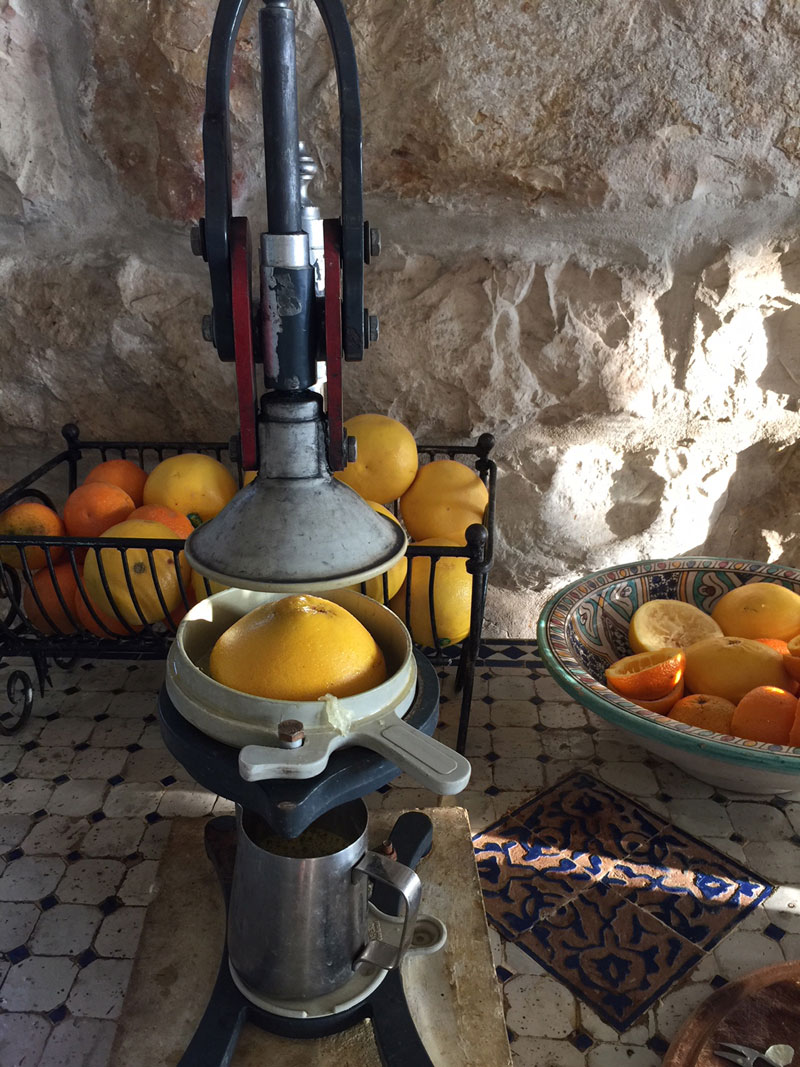
Old fashioned do-it-yourself press for fresh orange and grapefruit juice at the Mount Zion hotel breakfast buffet.
For Muslims, Jerusalem is the third holiest site, after Mecca and Medina, both in Saudi Arabia. The prophet Muhammad is believed to have gone up to heaven from a stone now covered by the golden dome in the Dome of the Rock. That and the ancient Al-Aqsa mosque are the main buildings in the 14-hectare Temple Mount, entry to which is restricted for non-Muslims.
For Christians, Jerusalem is central to Jesus Christ’s ministry, where he preached, where he cleared the Temple of merchants and money changers, where he was tried and condemned, then crucified and buried and, on the third day, rose from the dead. Jerusalem is the start of the Christian’s journey of faith that will take one to places learned since childhood from the Bible.
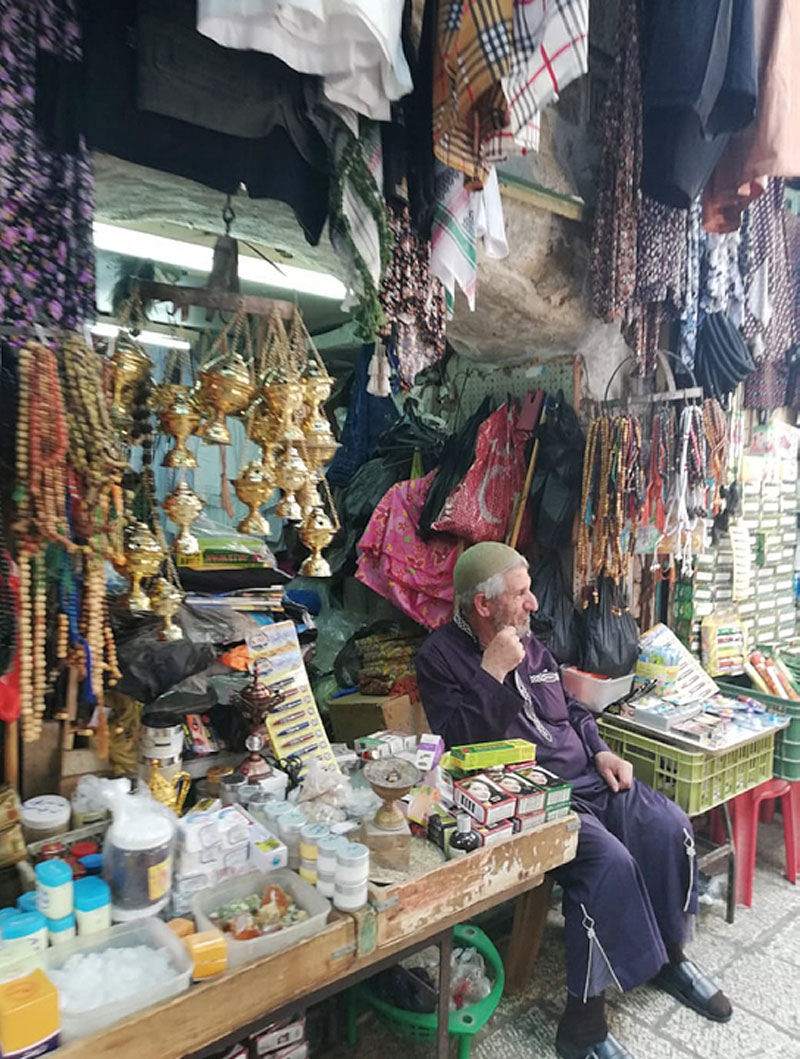
Stalls selling relics and souvenirs line the alleys in the Muslim Quarter along the route of the Via Dolorosa
Our journey of discovery and faith
We got in to Jerusalem at mid-morning, bleary-eyed after the overnight Cathay Pacific flight to Tel Aviv and the nearly hour-long drive from the Ben Gurion Airport. The Mount Zion Hotel had a welcoming old world charm, and from the window of my second-floor room I got my first look at the city – it was as I imagined a scene from biblical times would be. By muni-cipal decree all structures are covered in Jerusalem stone to preserve the historical look of the city, so there are no steel and glass buildings or gaily painted houses, just low stone structures on undulating hills.

Interesting structures covered in Jerusalem stone like theAbbey of the Dormition can be found throughout the city.
After a sumptuous and very Middle Eastern breakfast of breads and salads, dates and figs and yogurt and the sweetest orange juice squeezed out of a most ingenious manual contraption, we headed out to explore the city. Our guide Ikey Korin started off with, “Now we go to hell!” as we rounded a steep bend, pointing out Gehenna, the valley of Hinnom, where child sacrifices were held in ancient times. Jerusalem has a long history, about 3,000 years from when King David conquered the city from the Jebusites and established it as the capital of the Kingdom of Israel, but there is evidence the city existed long before that, some records say all the way to 4500 BC. It is therefore not surprising that around every corner there is a place of significance, biblical and/or historical, and in the city there are over 2,000 active archeological sites.
Our first stop was a site sacred to the Jews, King David’s Tomb on Mount Zion. From there we walked – be ready to walk, as it is the only way to explore the city – through the Zion Gate. What is known as the Old City is divided into Jewish, Armenian, Christian and Muslim Quarters, plus Temple Mount. The city walls are about 4 kilometers long, 13 meters tall and 2.5 meters thick. We were told it is possible to walk on the two sections of the wall that have been restored, which would be quite an experience.
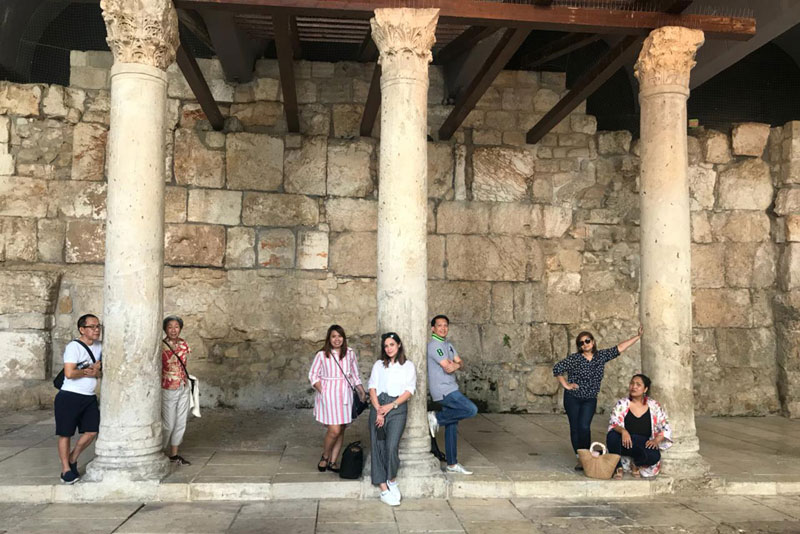
The IMOT group poses at the Cardo, ruins of a main street from Roman times.
Anticipation mounted as we headed for Temple Mount and the Western Wall, through the Armenian and Jewish Quarters. That first sight of the golden dome and the stone wall below it with pilgrims bowed in prayer is quite special and moving.
The Western Wall – sometimes called the Wailing Wall, allegedly because of the sound of Jewish prayers mourning the destroyed temple – is the last remnant of the Second Temple, which was destroyed in 70 AD by the Roman legions. The wall, however, was not destroyed, leading to the belief that it is blessed by God. Because of entry restrictions to Temple Mount, the Western Wall is the holiest place where Jews are permitted to pray.
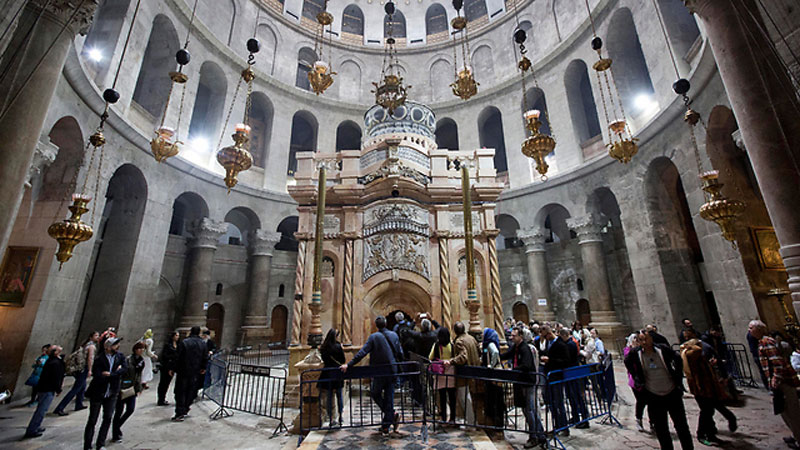
The Edicule preserves the location of Jesus’ tomb not far from where he was crucified.
Access to the Wall is divided for men and women. Ritual washing of hands is required. Even without intending it, one approaches the Wall with a sense of awe, a mixture of respect for its antiquity and reverence for its spiritual significance. I took out a little note I had written and, together with the one my co-worker had given me, found a little crevice in the wall and stuck them in. Every year, over a million such notes and prayers are tucked into the wall; these are periodically collected and buried. Leaving the wall the faithful walk backwards, never turning their backs on this holy site.
From there we moved on to the Muslim Quarter, to follow the Via Dolorosa or the path Jesus took to his crucifixion. It was quite a surprise to find that the route is now a maze of rather dark alleys lined with shops selling everything from clothing to carpets to religious relics to art works to tacky souvenirs; a very persistent man even insisted on showing me “authentic” relics of Saint Peter! The Stations of the Cross are denoted by markers placed on the wall above the stalls, easy to miss unless you look for them.
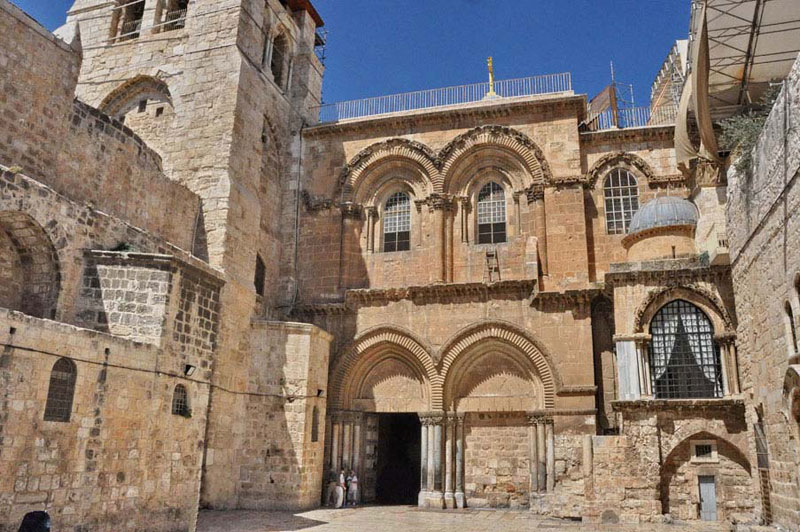
At the Church of the Holy Sepulchre.
Following the Via Dolorosa took us to the Christian Quarter and the Church of the Holy Sepulchre. Originally built in 330 AD, it commemorates the site of Christ’s crucifixion and burial. Today, various Christian groups – Greek, Roman, Armenian and Coptic – control parts of the church complex and conduct services regularly. The church is ornate and there is a long line, even in the low tourist season months of summer.
We made our way through what seemed like a labyrinth to the lavish Altar of the Crucifixion, where a glass enclosure has been built over what is known as the Rock of Calvary, believed to be where Christ’s cross was placed. We were told that this particular white rock outcropping had a cleft or fissure which made it unsuitable for quarrying; thus it was left and used for crucifixions. When you get to the altar you kneel and reach in through a hole in the glass case to touch the rock. A Greek Orthodox priest – they control this chapel – stood by to keep the line moving.
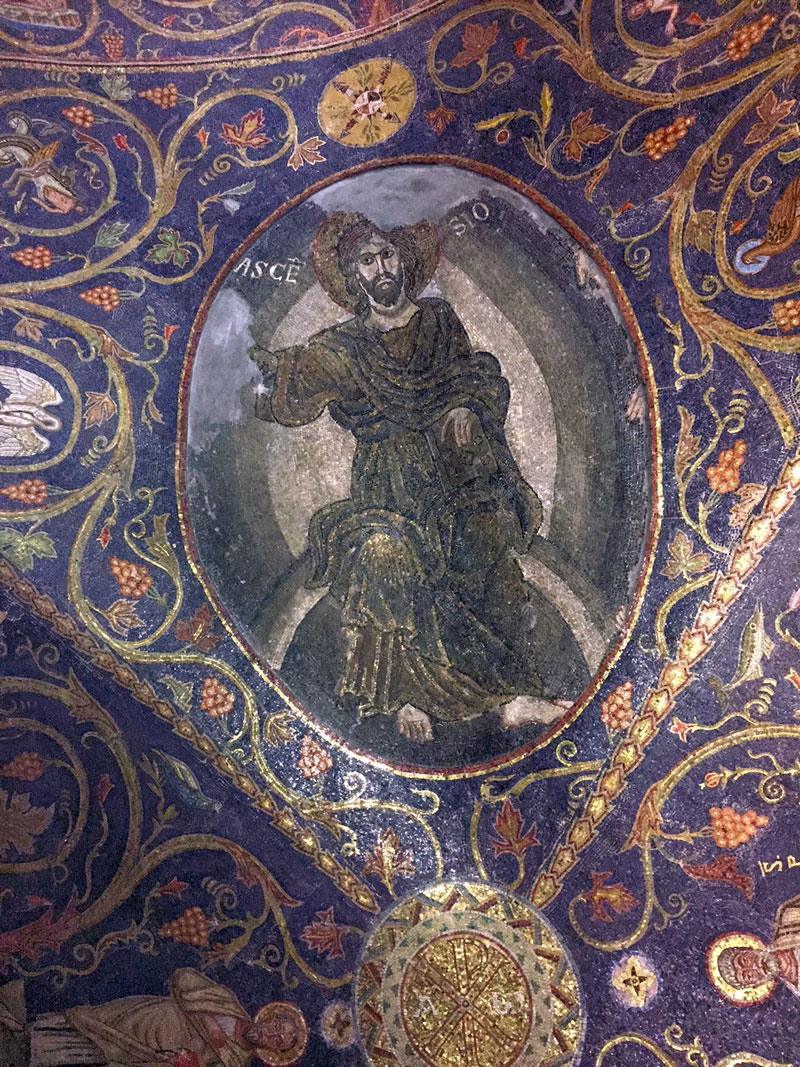
Detail from the ceiling of the Altar of the Crucifixion
Down a steep steel staircase we proceeded to the nearby Edicule, preserving the site of what is believed to be Christ’s tomb. The long, snaking queue to get to the front of the structure to look into where the tomb is made us decide to pass on this site. We were told that the presence of other first-century tombs hewn in the rocks inside the church attest to this being the true location of the tomb of Joseph of Arimathea where Christ was buried.
Earlier in the day we had driven up to the Mount of Olives east of Jerusalem, passing by the Garden of Gethsemane. I would have wanted to walk in the garden, to be where Christ prayed and where the disciples fell asleep and where the Roman soldiers came to arrest him, but our schedule did not allow a stop. From atop the mount – it is just 826 meters high – we looked down on Jerusalem, the golden Dome of the Rock gleaming amidst the sand hues of the city.
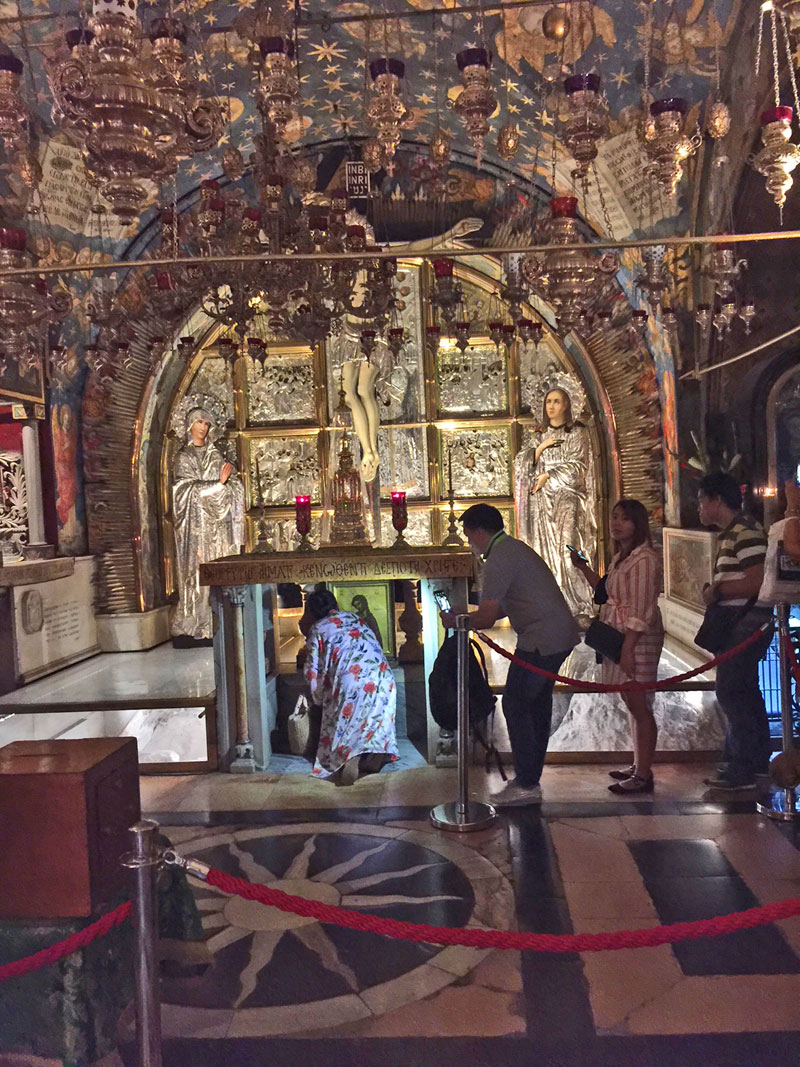
Pilgrims kneel to touch the rock on which Jesus was crucified.
On the night before his crucifixion Jesus and the disciples walked the seven kilometers from the city up to the garden and this mountain, from which just a week ago he rode triumphant into the city. And as he did – looking down on the city much as we were doing that summer morning – Jesus wept over the city, saying, “If you, even you, had only known on this day what would bring you peace…”
To walk where Jesus walked, to kneel and touch the rock where His cross was, to look down as he did on the “shining city on a hill,” touches a part of the soul and lifts up the spirit to connect with something greater than self. Jerusalem is where faith meets history.


















